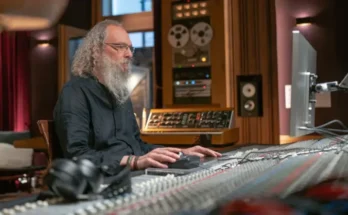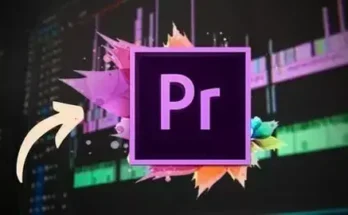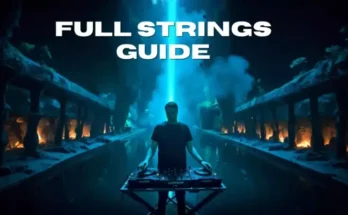PDF MOV incl. Project files | 448.31 MB
Andrew Lowell, a long-time member of the Houdini community, today announced the release of Simultaneous Music, Animation and Sound Techniques with Houdini. This 250 page e-book is full example files created for the intermediate Houdini user, music enthusiast, or pro looking for a better understanding of CHOPS. The techniques demystify a broad range of concepts in procedural animation, interaction with musical data, and sound/music generation.
Learn how to use music and sound effects to drive animation, generate sound effects from your animations and create musical tools directly within Houdini. After learning these skills, the reader will have expert knowledge of Houdini CHOPs (Channel Operators), and a wide range of music and audio techniques.
Working with Triggers
One of the most important elements in procedural animation is knowing when you want an event to occur. These two chapters will walk you through trigger extraction, and animation timing, as well as working with musical composition data (MIDI).
MIDI and Animation
These two units encompass five chapters on various approaches for generating procedural animations based on MIDI. You will learn how to cause a character to repeat a motion according to when MIDI notes occur. Then you will dive deeper to discover how to use velocity information of the notes (how hard they are struck) to determine how hard the character will strike his instrument. Next you will learn to use MIDI data to determine which loop is played to animate the character striking various instruments. And last, you will be guided through the process of generating your own animation curves to make the character play a piano.
Audio and Animation
These four chapters look at ways to work directly with sound (audio data). You will be taught the basics of sound necessary to work intelligently with audio and visual mediums in unison. Techniques to generate animation from audio, as well as generate audio from animation, particles, and dynamics. Spatial audio, the process of virtual sound recording is also covered in depth.
Working with Synthesis
Houdini’s procedural nature allows you to build any kind of synthesizer you want! This in itself is pretty remarkable, but we can take it one step farther and integrate sound synthesis with visuals and effects. You will learn the basics of sculpting sound, principals of subtractive and granular synthesis, and how to integrate these synthesizers with an effects scene.
“In this book, Lowell reveals a contemporary approach to the exploration of visual music. Read this book if you have any interest in the synaesthetic artistic aspirations of Kandinsky, Klee and Kupka. Here Lowell teaches you how to paint these ideas with motion. Learn how to develop the fundamental connections between sound, color and form like the 20th century masters Whitney and Lye within the powerful 21st century framework provided by Houdini’s CHOPs.” – David Robert, Side Effects Software.
“The definitive guide to synesthesia. Andrew Lowell covers in his book everything from basic CHOP techniques to systems you would usually describe with the term “un-do-able”. It is a absolutely required reading for anybody involved in complex animations.” – Georg Duemlein
“Andrew Lowell’s new book brings a welcome and refreshing exploration of probably the least used context of Houdini, CHOPs. The examples are clear and easy to follow, from simple concepts of basic CHOPs to advanced topics of triggering and sampling, 3D spatial synthesis, envelope generation, procedural event handlers, MIDI processing and much more. The integration of 3D computer graphics and audio synthesis is a field awaiting creative minds and imagination, Andrew’s book lays out a road map for you adventure in synthesis.”- Mark Story.
“It’s great to see this unique and powerful area of Houdini get the attention it deserves. Music and animation go hand in hand; only Houdini offers a seamless and powerful integration of these two worlds.” – Peter Bowmar
“Take an audio editor, combine it with an advanced sound synthesizer and directly embed it in the most power and flexible 3D animation software and you have the opportunity to ease the management of your animation data and explore one of the best kept secrets of Houdini. Andrew Lowell has mastered this amazing area of Houdini and you will learn an extraordinary amount from his techniques and expertise. You all know how much technical books cost these days. What you will learn in the first chapter of Andrew’s thorough exploration will pay for the book. I learned a great deal with Andrew’s guidance, and I’ve been teaching Houdini since it first came out.” – Peter Robbinson
“For any beginning Houdini user a great and thorough explanation of the use of CHOPs. Andrew managed to explain how to use the CHOP environment with animation and sound in a clear, step by step, way, with complete scene files, explanation on how to create Digital Assets and more. After finishing his e-book, you’ll be able to make your own sound editor in Houdini!” – Hans Hoogenboom
About the author:
Andrew Lowell’s vision of sight and sound theory began in high school as he composed electronic music and on into college when he animated his first 3D scene using POV-ray. After obtaining his BA in Audio Engineering and teaching himself multiple graphics and audio applications, he continued to seek a solution to this vision: a procedural system to integrate audio and visual information and allow one to generate the other. Houdini was just the system to facilitate and realize his goals. Andrew is currently an Effects Technical Director at Rhythm and Hues and also teaches at Side Effect’s office in Santa Monica. It is Andrew’s hope that his first book will spur more enthusiasm, projects, development, and interest in this exciting and new area of the digital arts.
[toggle title=”Home page”]https://2shrink.com/eBOFv3[/toggle]

http://alfalink.to/599430bd25e315dd7902
Please REPORT in Comment Broken Links




